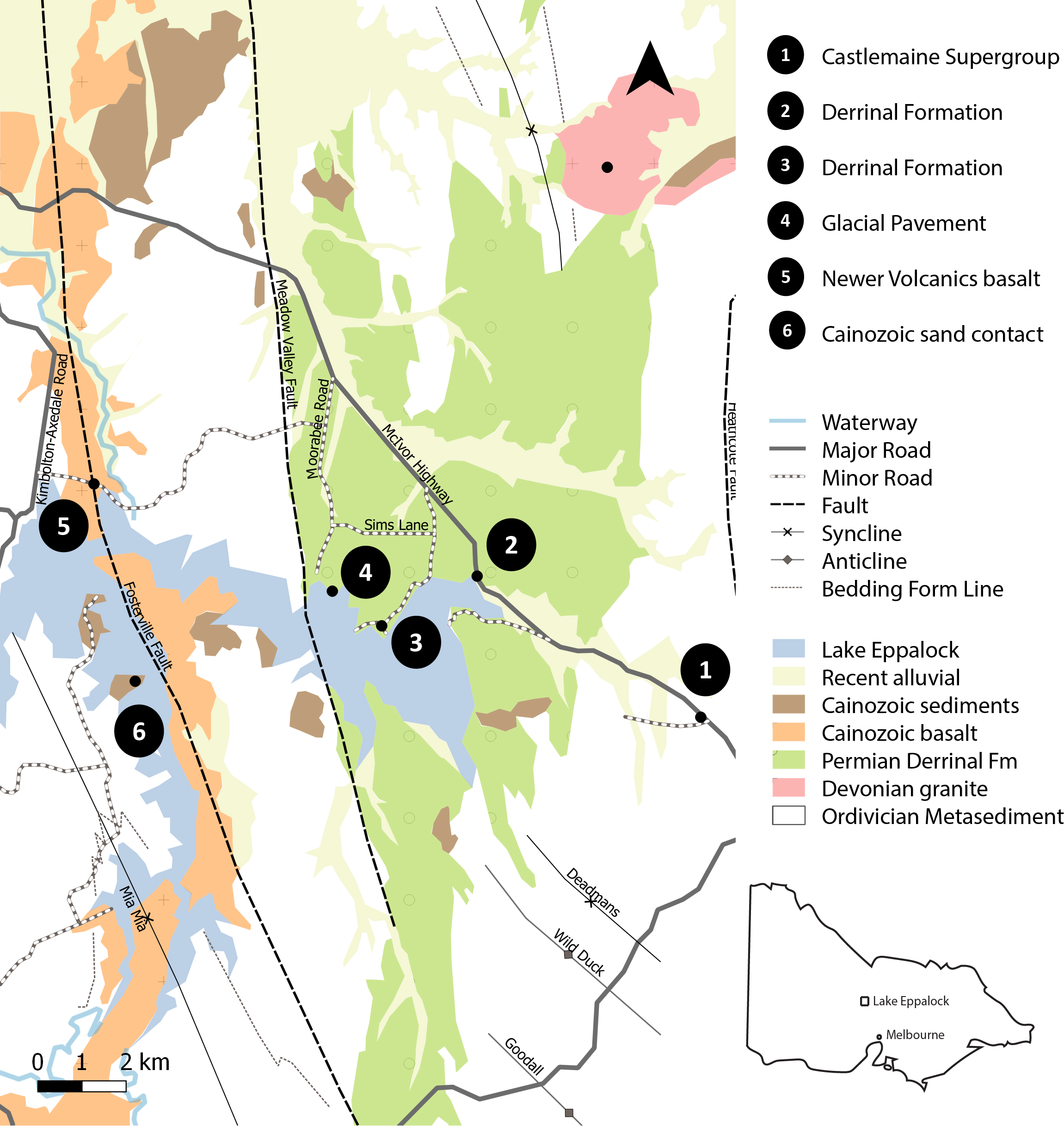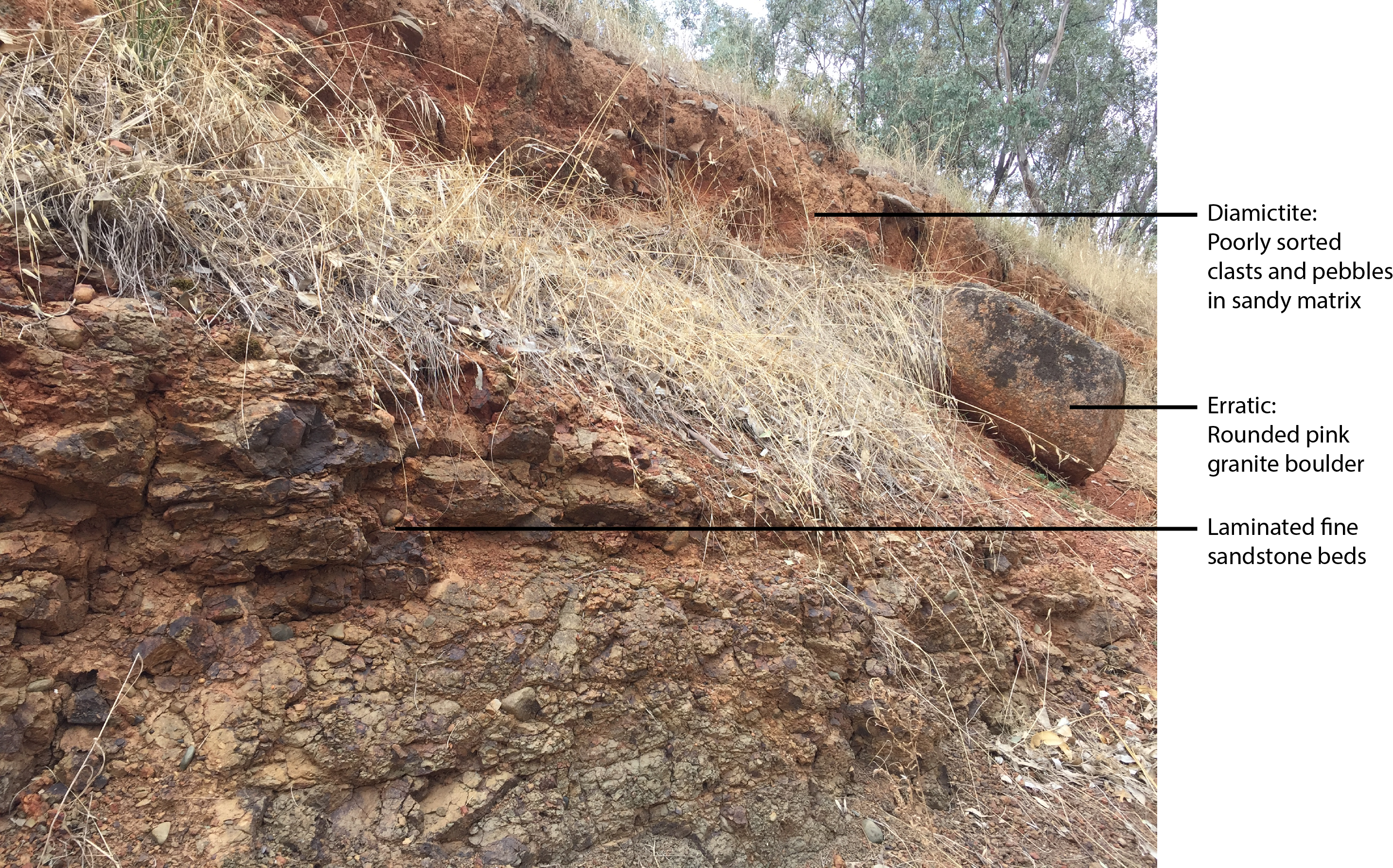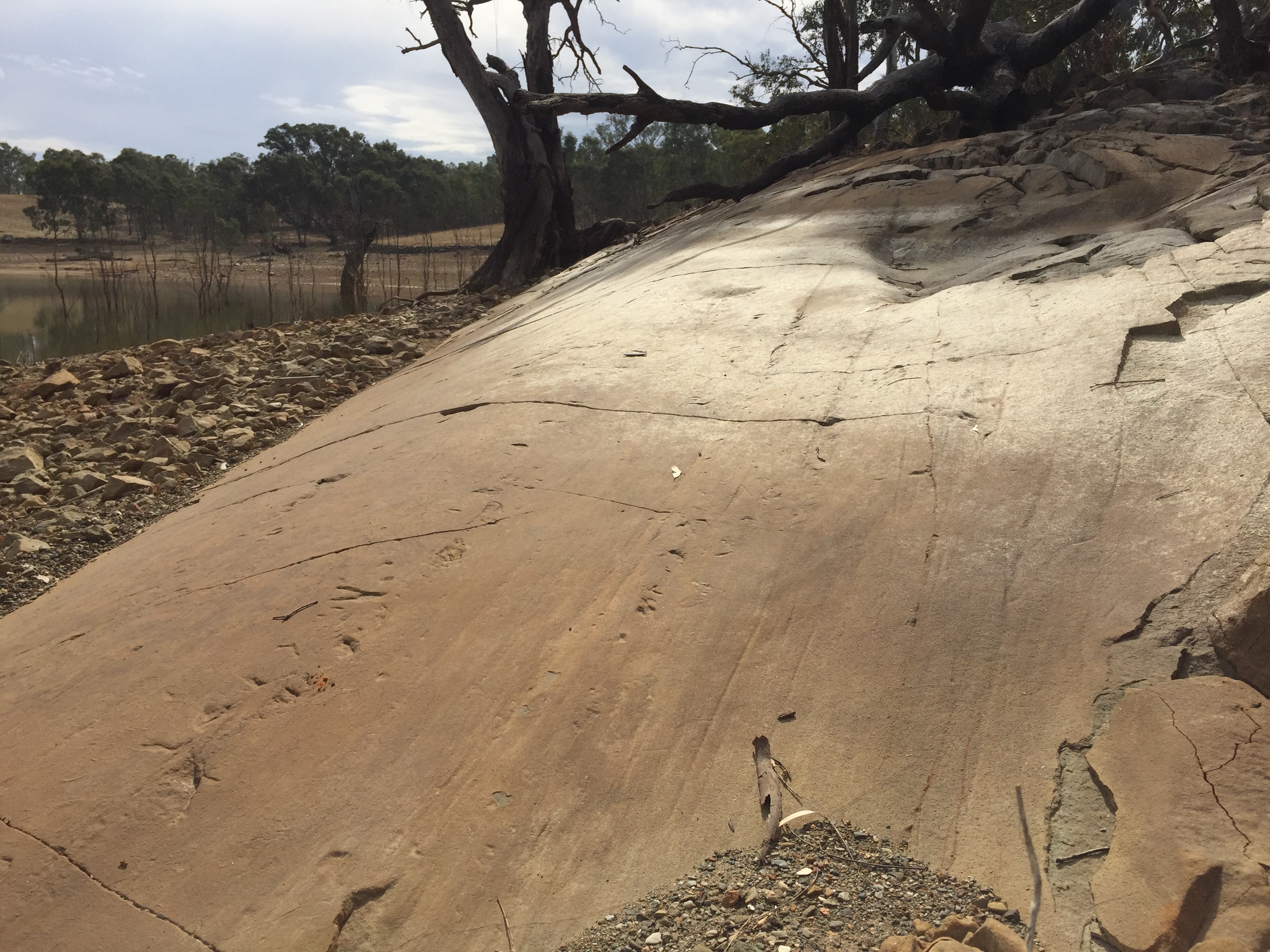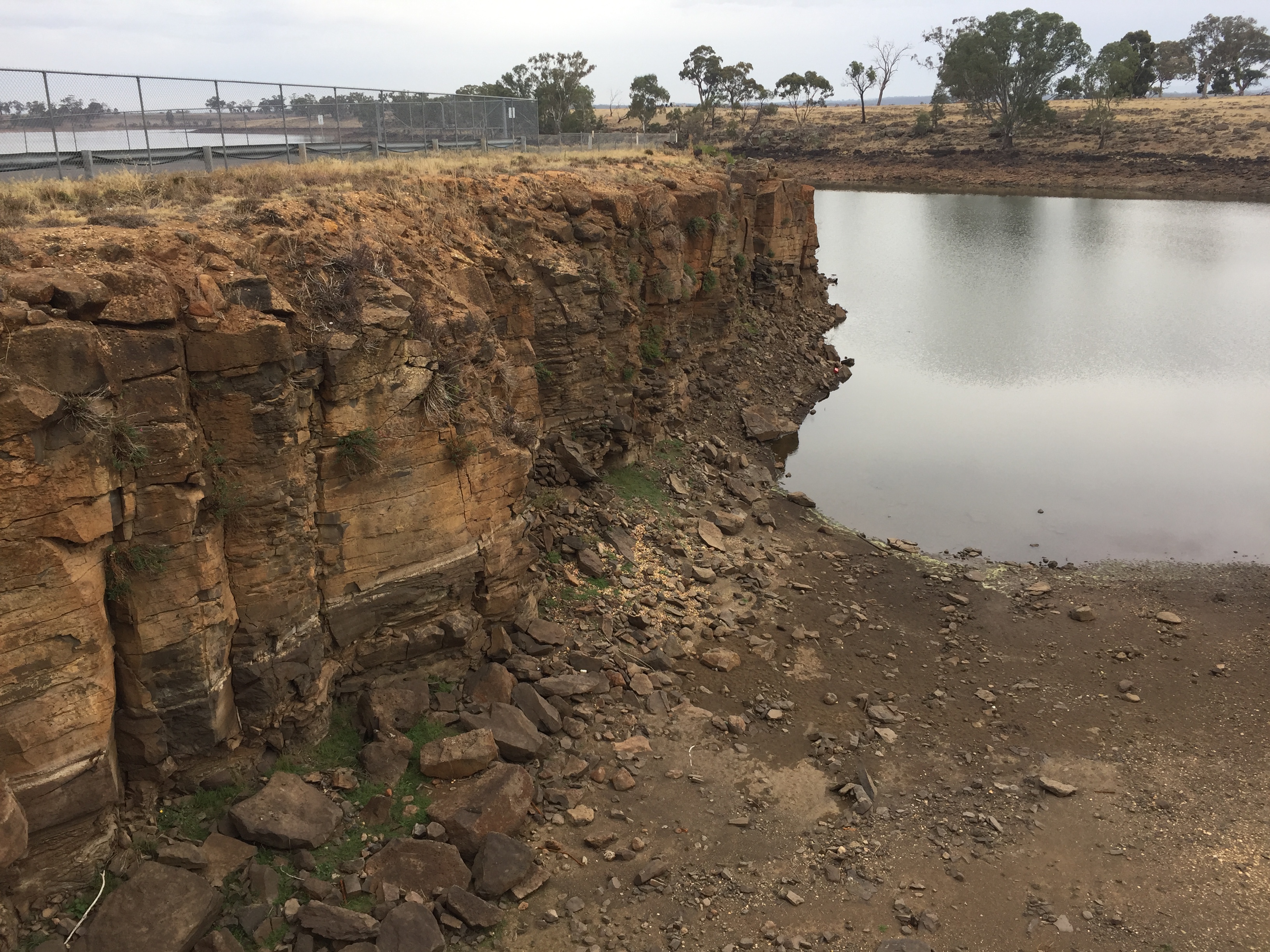Millions of years ago an extensive glacier once carved its way in a northerly direction across Victoria, with only a few outcrops surviving millions of years of erosional processes.
A glacier is essentially an extremely powerful frozen river of ice. As it moves over a landscape it erodes channels and valleys, literally tearing rocks from the bedrock and transporting the rocks hundreds of kilometres. A good example is the Franz Josef Glacier in New Zealand, which is 12 km long and extends down the steep western front of the Alps.

Lake Eppalock is home to it’s very own glacially excavated valley with a well-preserved glacial sequence in a N-S belt about 38 km long and 8 km wide (green in map below). The north shore of Lake Eppalock at Moorabee has a continuous outcrop over 1 km long including glacial pavements, erratics transported from distances hundreds of kilometres away and tillites.

During the Permian (299-251Ma) Victoria was located at much higher latitudes (South Pole), attached to a giant landmass called Gondwana (see reconstruction below). Gondwana itself was one of two land masses that formed the super continent Pangaea. The early Permian was a time of glaciation, with giant ice-sheets covering the southern-most parts of Gondwana, including Africa, America and Australia.

There are two main types of glaciers, small valley glaciers like that found in mountainous regions like New Zealand and continent-scale ice sheets like that in Antarctica. It is not yet understood which type moved across Victoria.
There are many glacial deposit types which can be seen along the shores of Lake Eppalock, however they are only part of the story. All rock types can be explored following the guide in the map above.
The stratigraphy is the region is dominated by a thick sequence of folded and faulted Ordovician deep-water quartz-rich turbidites called The Castlemaine Supergroup. There is a good road-cutting at field locality 1 (Entrance to One Eye State Forest).

These rocks are uncomfortably overlain by Permian fluvoglacial sediments and tillite deposits. There is a period of erosion not accounted for in the rock record between these two stages, thus rocks are ‘missing’ and the younger uncomfortably lies on the older.
As glaciers advance, they scour and pick-up (erode) rocks and transport them either along the base of the glacier, creating smooth erosional surfaces on the rock beneath by abrasion, or along the top surface of the glacier. When the glaciers retreat a number of deposit types form, including tillites and diamictites. A diamictite is a poorly sorted sedimentary rock. An example of a diamictite can be seen at field locality 2 (truck stop – head down the hill toward the lake) as well as field locality 3 (along foreshore road) where erratics of varying size are dispersed along the beach and in the rolling hills.

There are many exceptional outcrops along Moorabee Bluff (Loc. 4, end of Moorabee Road). As you move south-east along the shoreline the first thing you’ll notice is the large variety of pebbles and clasts. They are predominantly angular and derived from the Ordovician bedrock below, however there are a number of erratic clasts and pebbles including: pink granite, vein quartz, mafic volcanics and chert.

Further along the beach there are a number of near-vertically oriented erosional surfaces that can be seen cross-cutting bedding. The western boundary of the glacial deposits is defined by the Meadow Valley Fault, which may have formed during or after the Permian. The eastern boundary, however, is thought to be undulating.

Keep walking to the southern point of the shore and you’ll be met with a spectacular glacial pavement. It is potentially the largest of its kind in Australia. Glacial pavements are basement rocks which are smoothed by the movement of the glacier above. As you can see in the close-up photo below, glacial striae (grooves) are well-preserved. The grooves were formed from rocks protruding from the base of the glacier. Their orientation indicates that ice-movement was to the north-northwest.

There is a long period of erosion after the Permian during which most Permian rocks disappear. Newer Volcanic Lava Flows millions of years younger uncomfortably overlie both the Ordovician Castlemaine Supergroup and Permian Derrinal Formation. The flows are isolated in a north-south trend cutting straight through the guts of the lake, following the important metallogenic Fosterville Fault. A great exposure of this rock unit is located at the Spillway (Loc. 5).

Cainozoic White Hills Gravel, a cover sequence which increases in thickness to the North, also uncomfortably overlies the Ordovician Castlemaine Supergroup. This relationship can be seen at locality 6 (Fortuna Point).
We acknowledge the the Dja Dja Wurrung Peoples of the Kulin Nation as the Traditional Owners of the land upon which this field guide has been created. We recognise that many areas hold deep cultural significance for local Aboriginal groups and we hope you will keep this in mind as you explore the region.

i drilled a diamond hole into the tillites at Calival for 300 metres before giving up
LikeLike